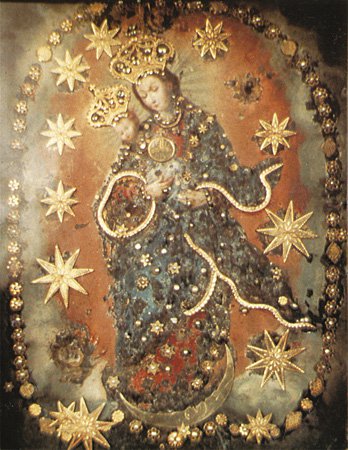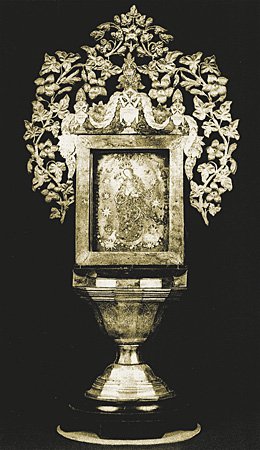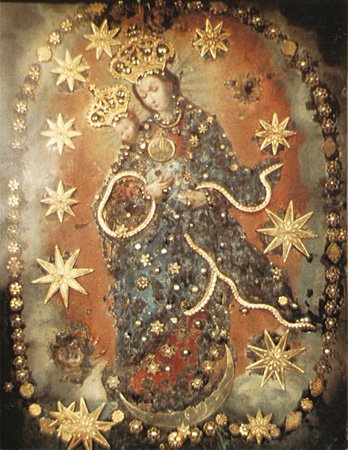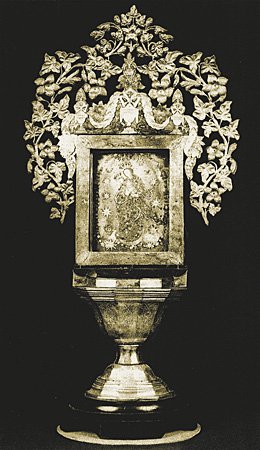Cultural Center of the Philippines
ENCYCLOPEDIA OF
PHILIPPINE ART
Our Lady of Prompt Help
1585 / Oil on metal with gold, pearl, and diamond appliqué / 20 x 15.5 cm / Artist: Anonymous Chinese painter / Roman Catholic Parish Church of Nuestra Señora del Rosario, Binondo, Manila
The Socorro is perhaps the only remaining example in the country of a painting by a Chinese artisan dating to the 16th century. It is recorded to have been venerated as early as 1588 in the Church of the Holy Kings, in the first site of the parian outside Intramuros prior to its transfer to Binondo. The absence of painters among the Philippine natives, due to lack of a representational painting tradition in the culture, led the missionaries to hire artistically talented Chinese immigrants to execute painting needs in the early days of the colonization.
The Socorro shows the full-length image of the Blessed Virgin carrying her Infant. The rendering points to a Flemish engraving prototype. Mary’s tilted head, the alignment of the tip of her right eyebrow with the right corner of her mouth, and the lopsided configuration of her right cheek recall a wide range of depictions by European artists from Jan Van Eyck to Albrecht Durer. Although the Chinese painter strove to copy the Flemish print closely, he was not able to hold back his Oriental sensibility. The face of Mary is almost ball-like in its roundness. Under the markedly arched eyebrows, her half-dosed eyes are more heavily shaded, evoking Sinitic eyes. The lips are also strikingly small, reminiscent of the proverbial “bee stung” mouth of women in Chinese paintings. The blue cape, flaring from under Mary’s cape, had a traditional image of the Buddhist goddess of mercy Kuan-Yin for inspiration. It may be said that the cult of the Nuestra Señora de Pronto Socorro was intended to replace the devotion to Kuan-Yin.
Like other native cult icons, the Socorro is embellished with ornaments of gold further inlaid with precious stones affixed in strategic places. Both Mary and Jesus wear appliquéd crowns with diamond encrustations. The image is protected by glass in an ornate frame mounted on a stem, suggesting that it was carried in the manner of a monstrance by one person during processions.
Written by Santiago A. Pilar



